What Are Content Pillars for Social Media?
Social media content pillars are key themes or broad topics that guide content creation efforts for your business’s social media profiles.
They keep your content production focused, ensure consistency, and help you develop authority around relevant topics.
We recommend selecting three to five content pillars. And any content you produce should fall under at least one pillar.
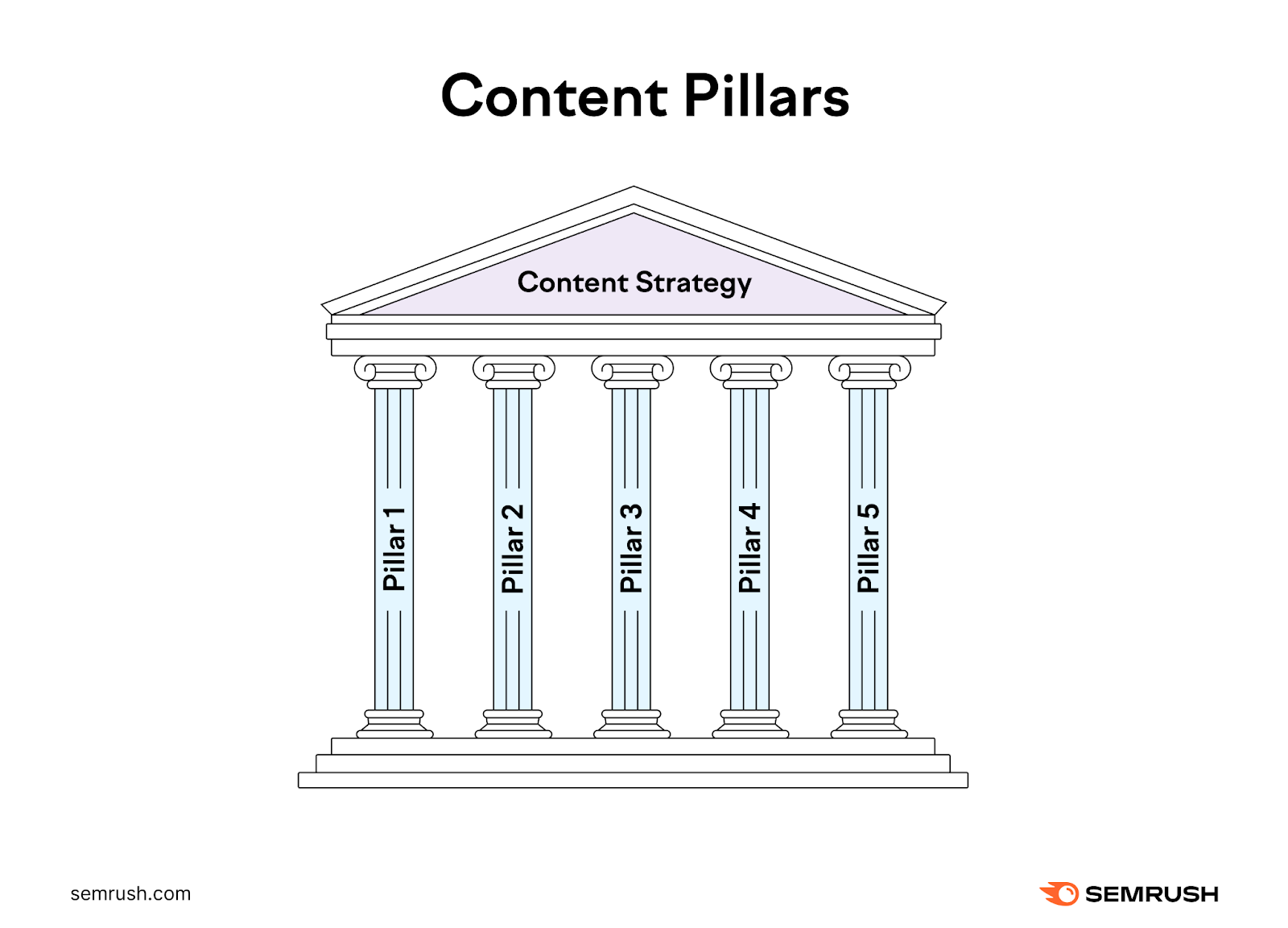
For example, say you own a home decor brand. Your content pillars might be:
- Inspirational interiors
- Styling tips
- Color theory
- Company news
You could post about one or more of these topics each day.
If you keep doing this consistently, fans of interior design will start seeing your brand as an authority on these topics. And as a trusted source of help and inspiration.
And they may be more likely to think of your brand when searching for new home decor products.
How Content Pillars Help Your Social Media Strategy
Social media content pillars are useful because they help you:
Establish Brand Identity
Using a set of content pillars helps people come to associate your brand with those topics.
That’s why choosing the right content pillars is important.
They should be topics that:
- Interest your target customers
- Help your customers achieve their goals
- Fit with your brand mission and values
For example, consider a brand selling gardening equipment. Their target audience includes both beginner and experienced gardeners who want to achieve a beautiful garden, learn new gardening techniques, and have fun.
The brand’s mission is to help gardening enthusiasts at all levels improve their skills. And its values are to be helpful, encouraging, inspiring, and inclusive.
That gardening brand might choose the following content pillars:
- Garden inspiration: Videos, images, and user-generated content showing aspirational gardens
- Gardening for all: Posts that showcase gardeners from all different backgrounds and communities
- Gardening tips: Videos, infographics, and lists with expert tips on growing and gardening
Over time, the brand will be able to foster an identity that reflects their personality and what they care about.
Diversify Your Content Offerings
Content pillars give you a range of ideas to post about. To keep things interesting and enable you to speak to multiple audiences.
For example, a running shoe brand wouldn’t just want to post about running shoes.
But they might have a pillar on running tips, one on community stories, and one on sharing updates about national and local running events.
That way, the content is diversified so there’s something for all the brand’s followers.
Ensure Consistency
Sticking to a handful of content pillars keeps you from having to constantly come up with new ideas. That consistency can build trust with audiences.
And the more trustworthy your brand appears, the more likely it is that people will buy from you.
For example, say a brand that used to post on social media every day hasn’t posted for a while.
A prospective customer might think the company doesn’t care about its followers. And be nervous about buying from them.
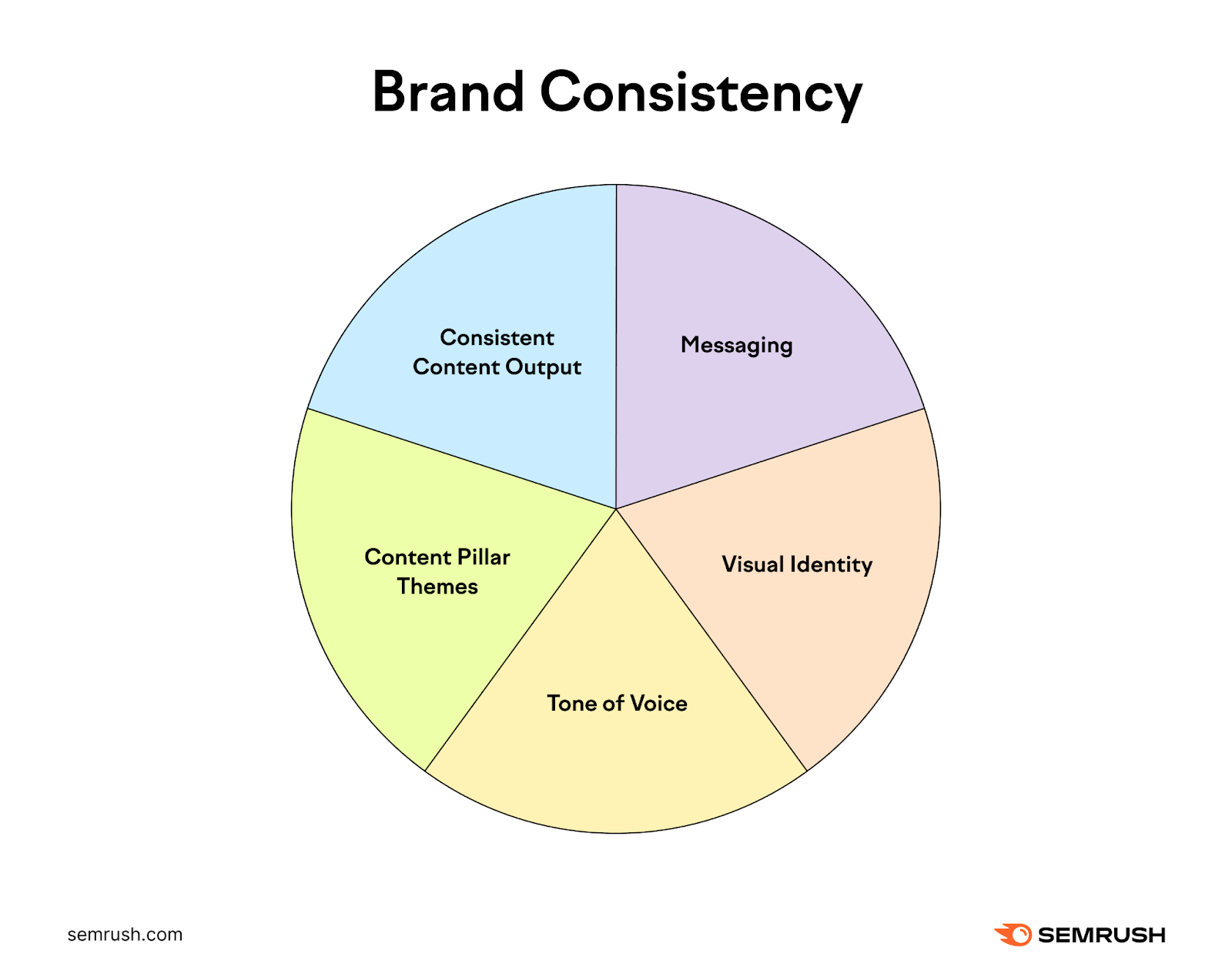
Content Pillars vs. Content Buckets
Some people use the terms content pillar and content bucket interchangeably. But they’re not quite the same.
Content pillars are the overarching topics your brand creates content around.
Content buckets are the broad categories or types you can use to organize your content. And plan out your social calendar.
That means you can cover almost all your pillars with each bucket type.
Let’s go over four of the most common content buckets to illustrate:
The Educational Content Bucket
An educational content bucket helps your audience gain knowledge they need to achieve their goals. And establish your company as an authority.
Educational content is a core element of Wells Fargo’s social media presence. And they’re able to cover multiple topics through this bucket.
They regularly post about things like staying ahead of scams and fraud and how to set financial goals.

The Inspirational Content Bucket
Inspirational content reminds people of what they want to achieve. And it helps them associate your brand with making progress toward those goals.
Tombow posts a lot of inspirational content to show its audience what amazing art they can create.
This inspires the brand’s audience. So they want to come back time and again to see what else they can create.
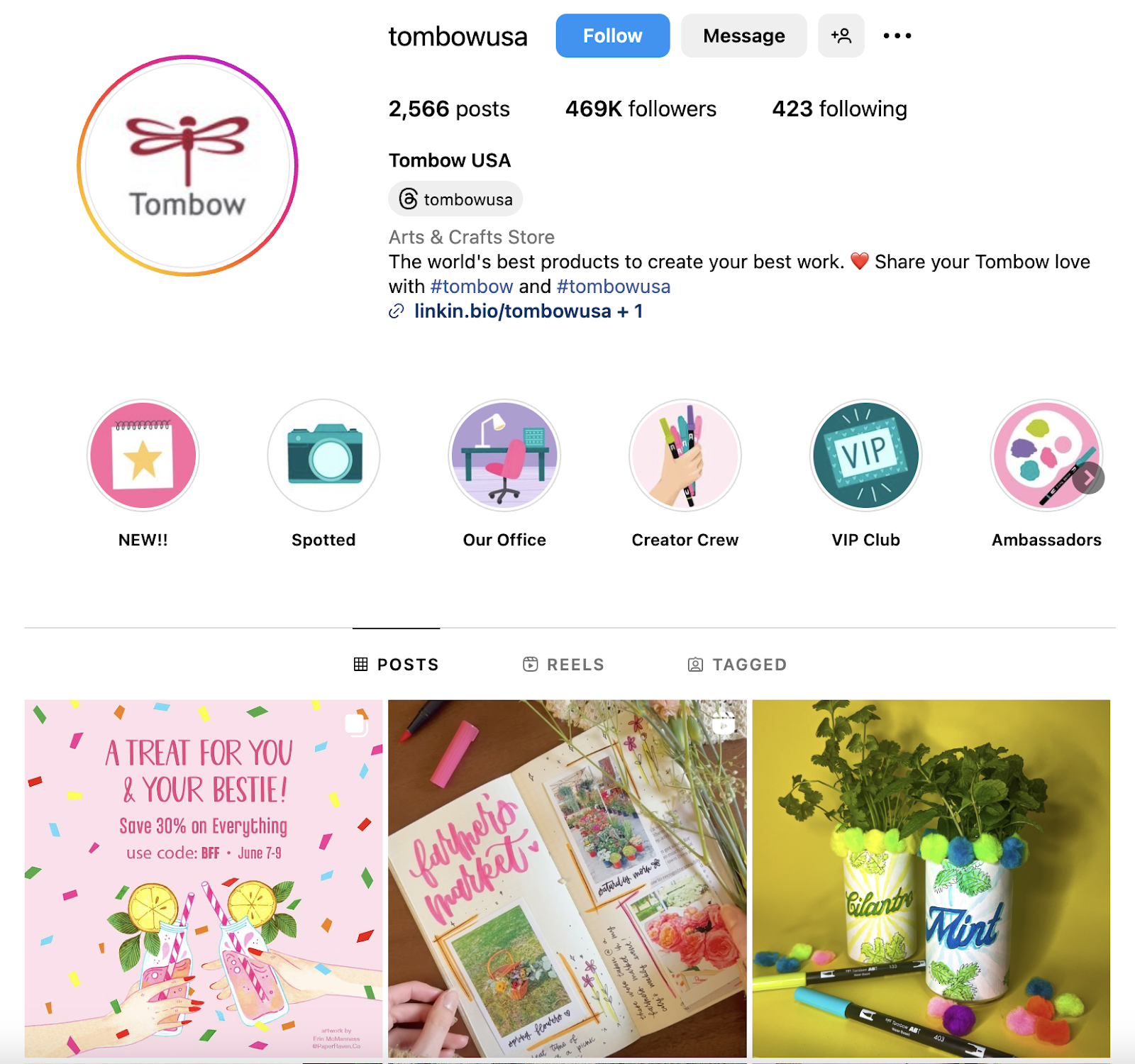
Wix is another good example. The brand regularly shares inspirational posts showing customer websites that were created with their website builder.
Showing what can be achieved using the Wix platform taps into people’s aspirations of having professional-looking websites.
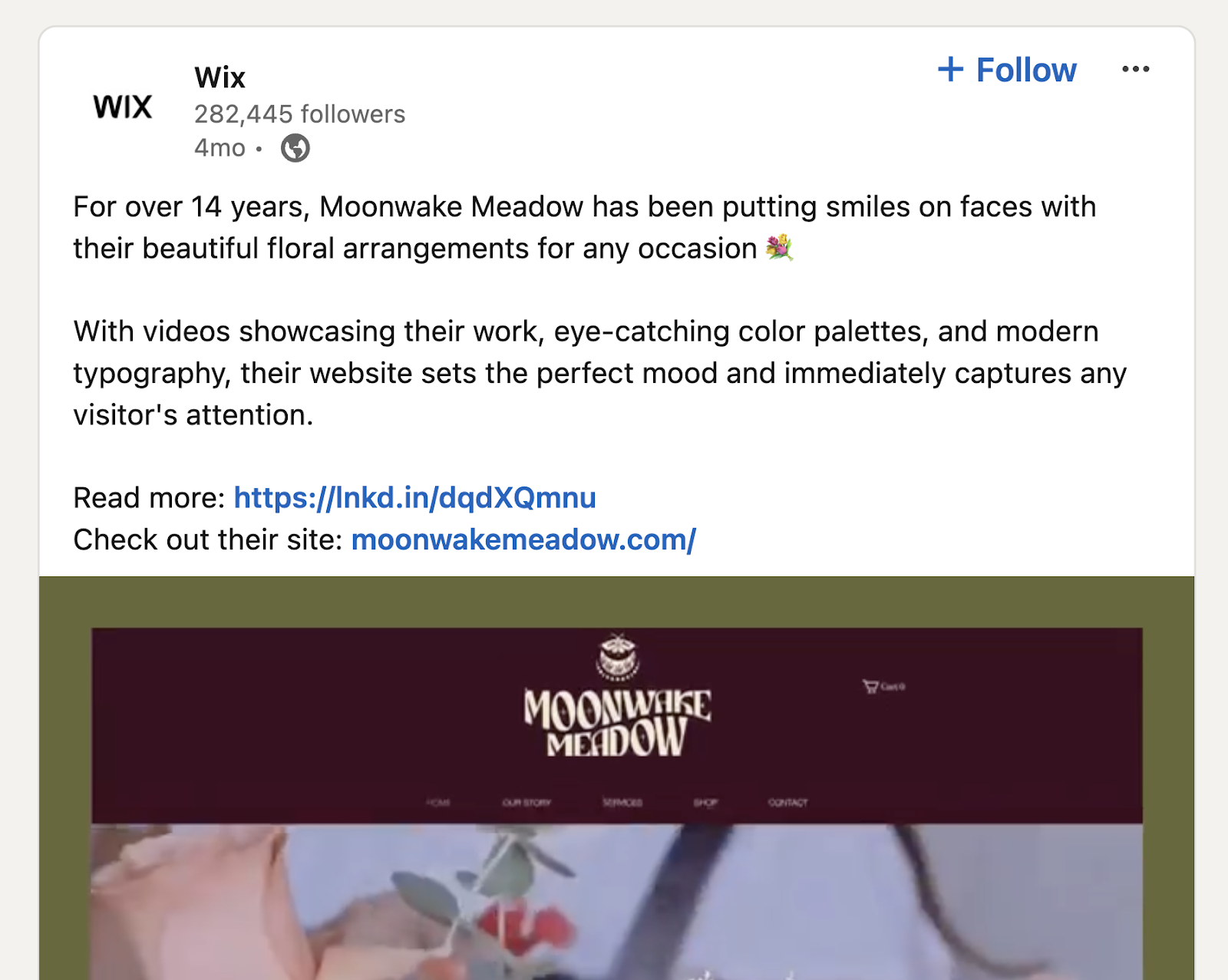
The Entertainment Content Bucket
Creating humorous or otherwise entertaining content can help your brand drive more engagement. And be more memorable.
A 2022 Oracle report found that 91% of people prefer brands to be funny. And 72% would choose a brand that uses humor over the competition.
Social media is the perfect place for brands to explore this side. Since people are usually on social media to be entertained.
The Cheesecake Factory has made entertainment part of their brand. They regularly post silly or funny content across their social media platforms.
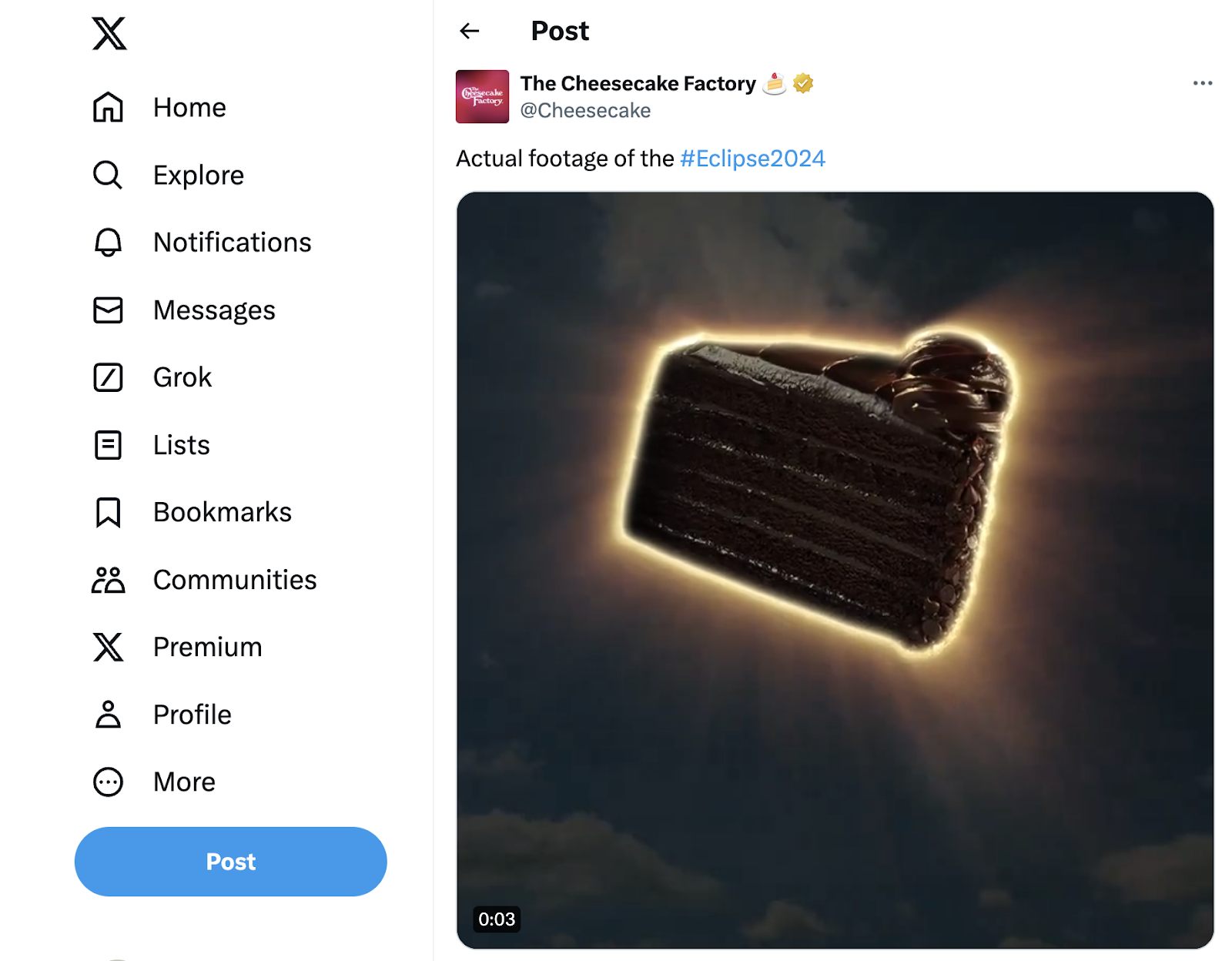
But the key is to remember your content pillars. Because posts meant to engage users through humor can fall flat if they’re not relevant to your brand.
The Promotional Content Bucket
Having a dedicated content bucket for promotions can help you showcase your offerings without paid ads. And help increase conversions.
You wouldn’t want all your content to be promotional. Because people also want to be entertained and inspired by social media.
But sharing regular posts about the benefits of your products or services, promoting sales, etc. is a good way to keep customers informed. And encourage them to buy from you.
Just look at Target.
Target includes a lot of promotional content on its social media channels. And those posts keep followers informed.
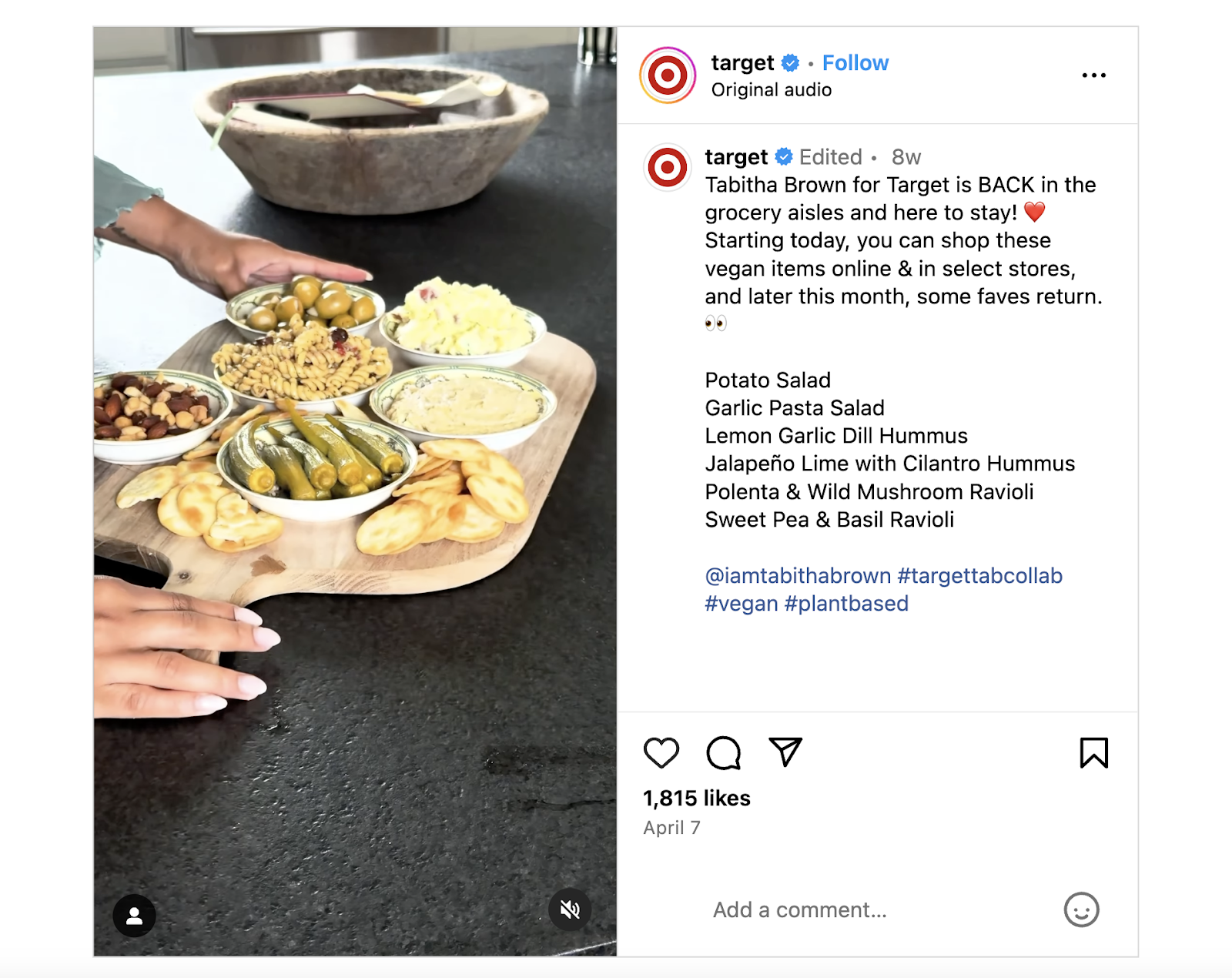
Even with promotional content, you can cover a variety of pillars.
For example, the running shoe brand from earlier might post about an upcoming race and mention there’s still time to break in one of their new releases prior to the event. Or feature a community story that shows someone coming into their store.
How to Create & Use Content Pillars for Social Media
Let’s go through the nine steps needed to create and implement content pillars.
1. Define Your Brand Mission and Values
Having a clear understanding of your mission and values gives you a starting point for choosing your pillars and ensures they’re aligned with your overall business goals.
To define your mission, consider the following questions:
- Why does your brand exist?
- What does your brand stand for?
- What makes your brand different from its competitors?
- What do you want to achieve with your brand (beyond selling)?
- How will your brand achieve those goals?
Write down your answers to the above questions. Then put them together into a one-sentence mission statement.
For example, IKEA’s mission statement is:
To offer a wide range of well-designed, functional home furnishing products at prices so low that as many people as possible will be able to afford them.
Then, define your brand values by answering the following questions:
- What are your brand’s non-negotiables (e.g., low prices, high quality, great customer service)?
- How do you want people to perceive your brand?
- If your brand were a person, how would you describe them?
Based on your answers, choose five values you think define your brand.
Here are some examples:

2. Identify Your Target Audience
Identifying your target audience and getting to know their mindset lets you choose content pillars that are most relevant to them. Which gives you a better chance of reaching them.
Get started by asking yourself what problem your product or service solves. And who benefits the most from your offering.
Let’s say your company sells premium ground coffee on a subscription basis to keep customer costs low.
The problem you solve is lack of access to quality coffee. And the people who benefit most are busy professionals who don’t have time to stop by a coffee shop.
Then, gather some supporting data using One2Target.
Just enter a few competitors into the tool to get a holistic look at your market’s audience.
You’ll see demographic information.
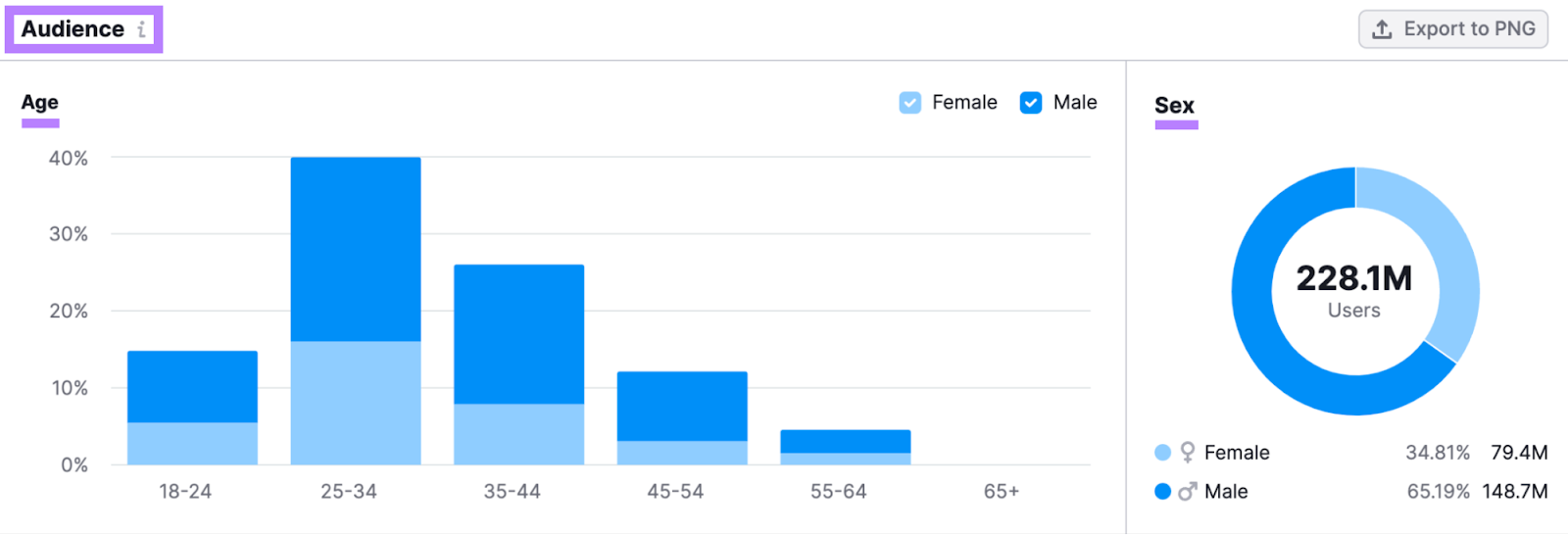
The tool also provides information about socioeconomic status, interests, and even social media preferences.

The next step is to create one or more buyer personas with all this information. These are profiles that represent the ideal buyer(s) for your product or service.
Here are a couple of examples of buyer personas for our imaginary coffee subscription company.

Now that you’ve clearly defined your brand and audience, you can start coming up with some pillars. In this case, you might have one about affordable coffee hacks and one about morning rituals.
3. Perform Keyword Research
Knowing your brand’s mission and values as well as who your target audience is are both incredibly helpful for determining your content pillars. But it’s a good idea to do keyword research as well.
This is because the topics that your audience is searching for on Google are likely to be of interest on social media, too.
You can easily carry out keyword research using Semrush’s Keyword Magic Tool.
Enter a broad term related to your brand and click “Search.”
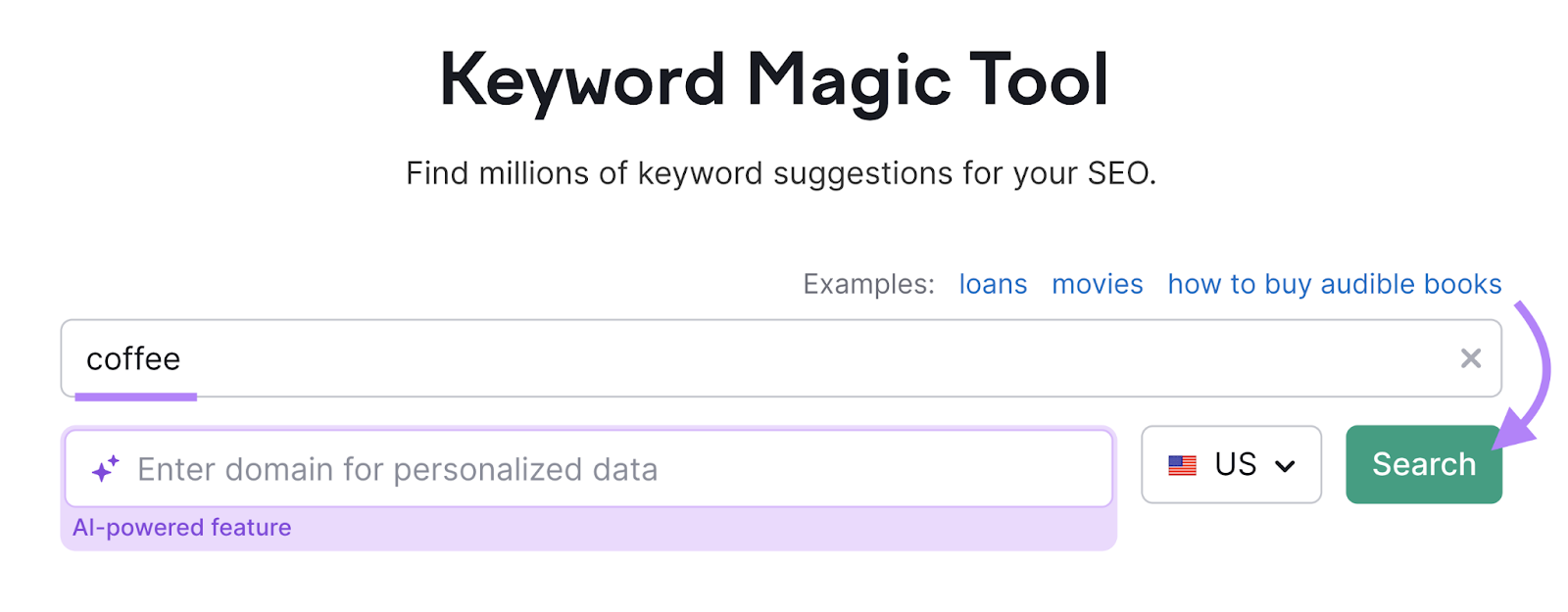
You’ll likely see a long list of related terms. Like this:
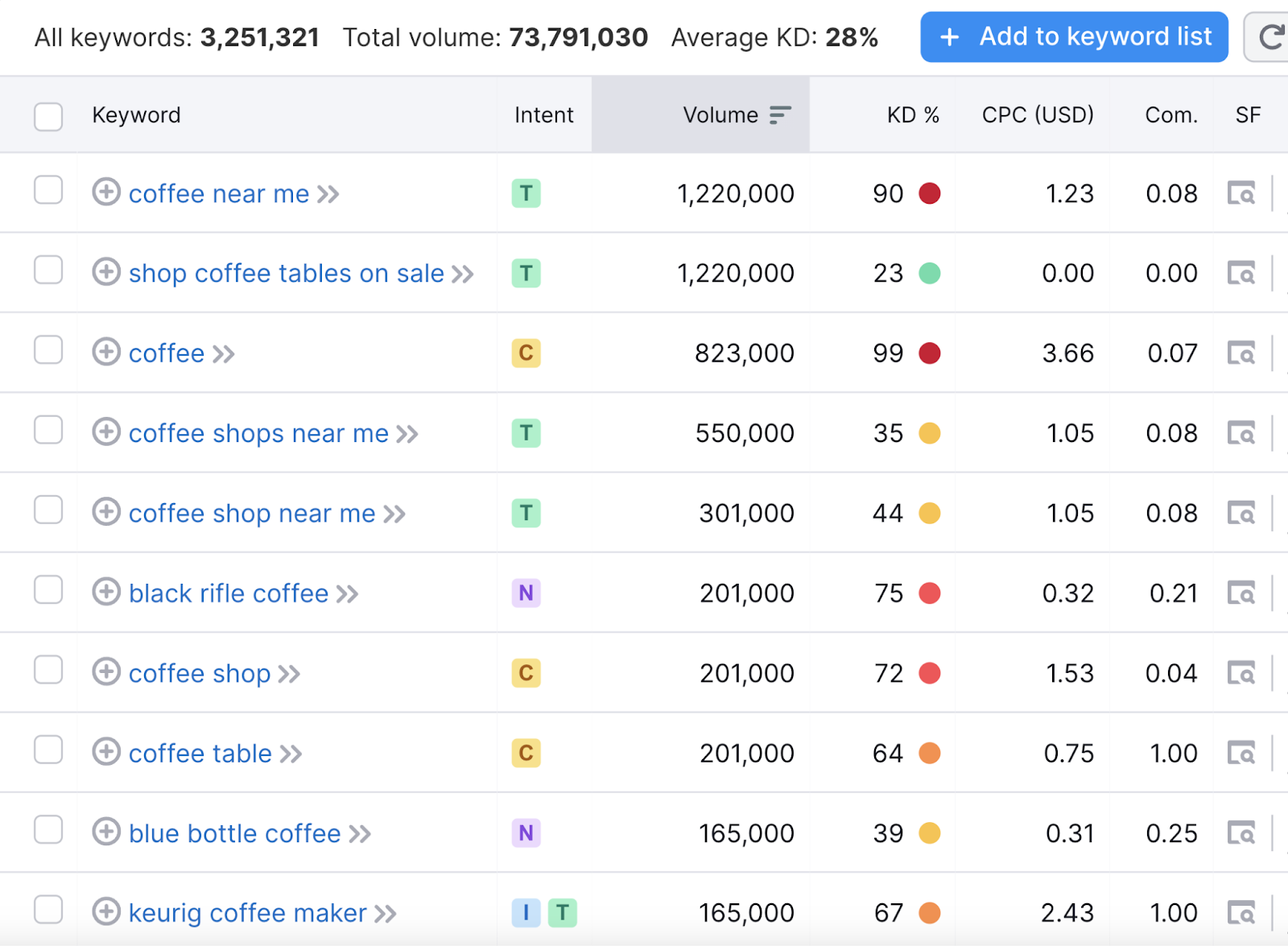
To narrow in on some more specific ideas, use the suggested groups to the left.
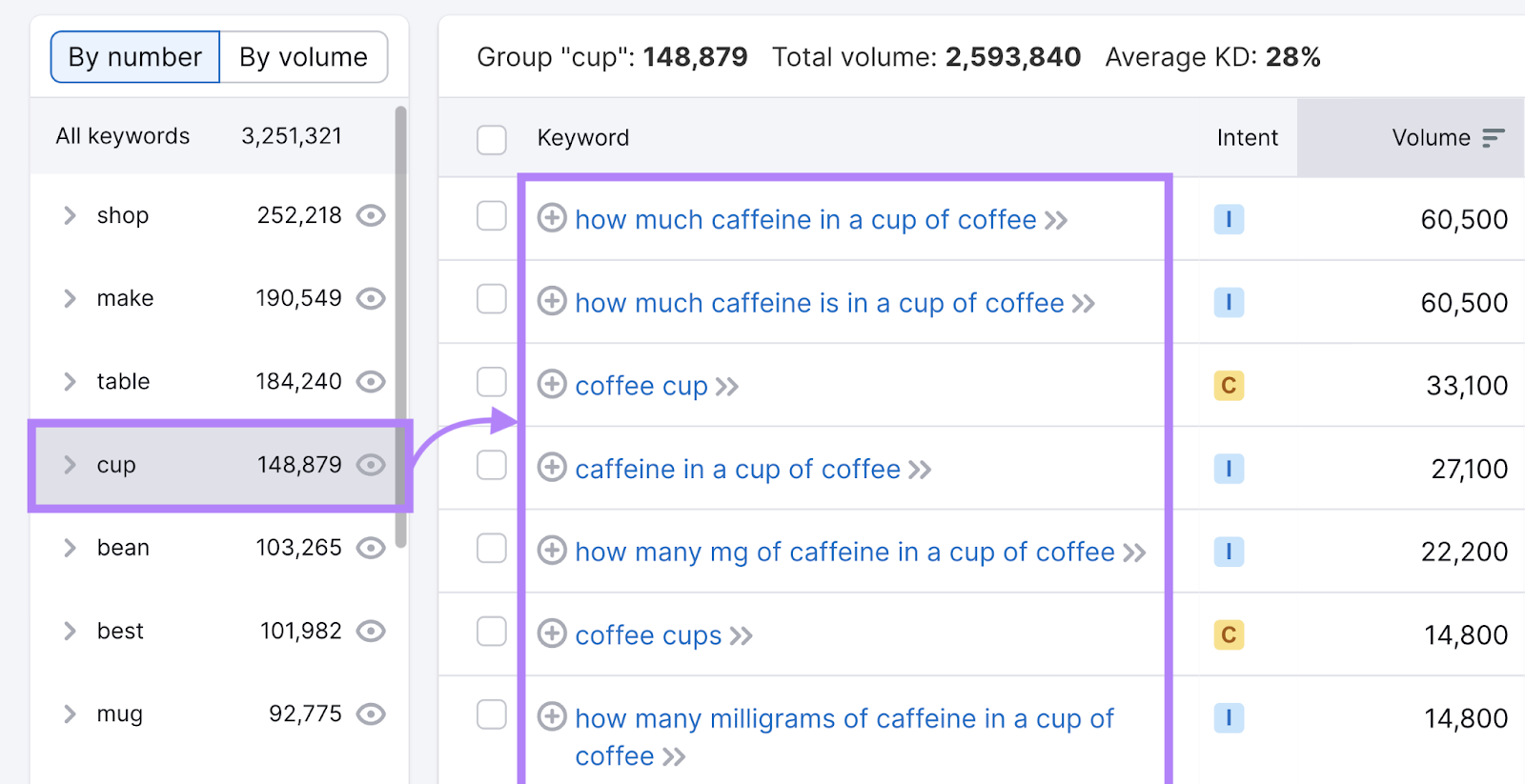
As you can see, there are a lot of keywords related to how much caffeine coffee contains.
Most of them get many thousands of searches each month. Which might prompt you to have a pillar centered on information about caffeinated coffee (facts, comparisons, etc.).
4. Create a Clear Structure for YourContent Pillar Plan
You should now have a list of pillar ideas. Which you can use to create a structured plan that will inform all your social media content.
First, write out the names of your content pillars.
Then, write a brief description of the types of content you’ll create for each pillar. For example: videos, GIFs, infographics, photos, and written posts.
And consider jotting down some more specific angles under each pillar.
5. Create and Post Quality Content
The quality of your content is just as important as the quality of your plan. Good social media content catches attention, drives engagement, and can even lead to business results.
Follow these guidelines to make sure your content is top-notch:
- Stick to your brand colors, fonts, and voice
- Do thorough research for informative posts
- Write clear, concise copy that’s easy to digest
- Use the best quality photography and videography equipment you can
- Make sure every post provides value in some way
Then, schedule your posts in advance to maintain consistency.
With Semrush’s Social Poster, you can quickly and easily schedule your social posts across multiple platforms.

Further reading: What Is Quality Content & How to Create It
6. Repurpose Content for Different Platforms
Repurposing your content across platforms helps maximize reach and engagement without duplicating efforts.
For example, if you’ve created a carousel post for LinkedIn, use those same images to create an Instagram Reel.
Or, use the copy from an infographic you posted on Pinterest to create a text-based post on X (formerly Twitter).
Not sure which channels to focus on? Revisit your audience’s social media preferences from One2Target.
7. Measure Your Results and Adjust
Measuring your content performance lets you see which pillars are working well. That way, you can create even more successful content in future.
So how do you track your results?
Semrush’s Social Analytics tracks key metrics like reactions, shares, and clicks.
It visualizes the data for you. So you can easily see what’s working well. And where you could improve.
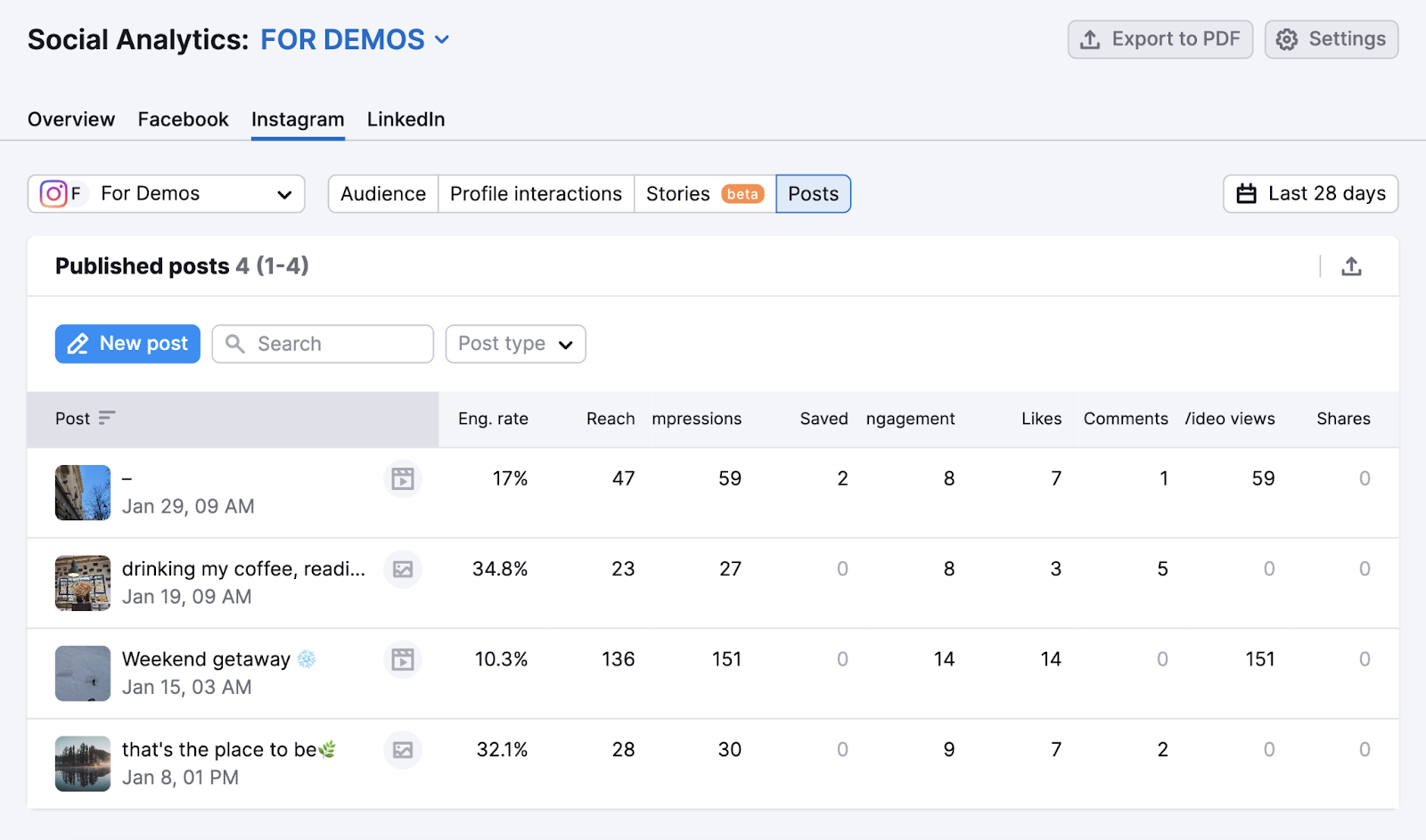
And track competitors’ social media performance using Social Tracker. To see what’s working well for them and how you compare.
Use all this information to determine whether you need to make adjustments to your pillars.
For instance, you might find that one or two pillars are working particularly well. And decide to post more of that content.
Or, you might find that a competitor is covering a pillar you don’t and is generating a lot of engagement. Which might lead you to replace one of your low-performing pillars.
Elevate Your Brand with Content Pillars
Well-chosen content pillars for social media can help you grow your brand, connect with your audience, and even increase conversions.
Ready to get started?
Do keyword and audience research with Semrush.
